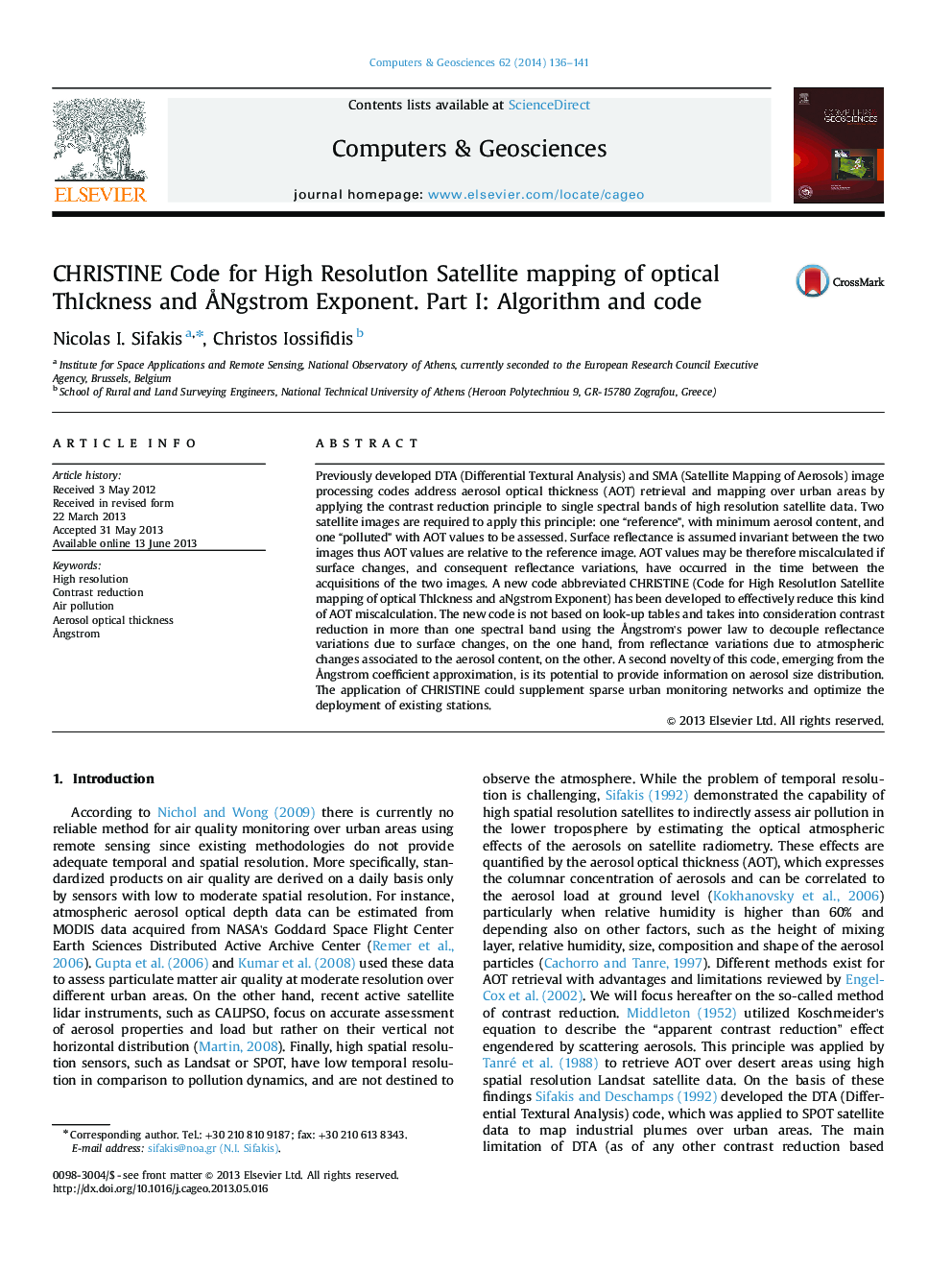| Article ID | Journal | Published Year | Pages | File Type |
|---|---|---|---|---|
| 6922930 | Computers & Geosciences | 2014 | 6 Pages |
Abstract
Previously developed DTA (Differential Textural Analysis) and SMA (Satellite Mapping of Aerosols) image processing codes address aerosol optical thickness (AOT) retrieval and mapping over urban areas by applying the contrast reduction principle to single spectral bands of high resolution satellite data. Two satellite images are required to apply this principle: one “reference”, with minimum aerosol content, and one “polluted” with AOT values to be assessed. Surface reflectance is assumed invariant between the two images thus AOT values are relative to the reference image. AOT values may be therefore miscalculated if surface changes, and consequent reflectance variations, have occurred in the time between the acquisitions of the two images. A new code abbreviated CHRISTINE (Code for High ResolutIon Satellite mapping of optical ThIckness and aNgstrom Exponent) has been developed to effectively reduce this kind of AOT miscalculation. The new code is not based on look-up tables and takes into consideration contrast reduction in more than one spectral band using the Ã
ngstrom's power law to decouple reflectance variations due to surface changes, on the one hand, from reflectance variations due to atmospheric changes associated to the aerosol content, on the other. A second novelty of this code, emerging from the Ã
ngstrom coefficient approximation, is its potential to provide information on aerosol size distribution. The application of CHRISTINE could supplement sparse urban monitoring networks and optimize the deployment of existing stations.
Related Topics
Physical Sciences and Engineering
Computer Science
Computer Science Applications
Authors
Nicolas I. Sifakis, Christos Iossifidis,
